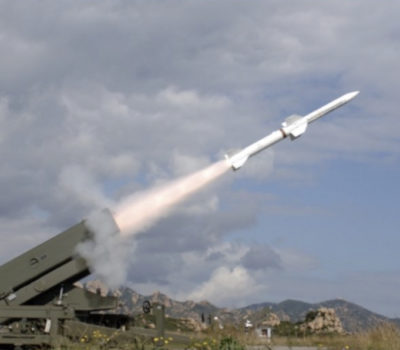USAF Wraps Up Flight Testing on Electric Aircraft, Complete with Casualty Evac
USAF Pushes for Better Health Care Access for Far-Flung Recruiters
Editorial: Re-Optimize Now
Radar Sweep
Enemy Drone That Killed US troops in Jordan Was Mistaken for a US Drone, Preliminary Report Suggests
U.S. forces may have mistaken an enemy drone for an American one and let it pass unchallenged into a desert base in Jordan where it killed three U.S. troops and wounded dozens more, officials said Jan. 29. Details of the Jan. 28 attack emerged as President Joe Biden faced a difficult balancing act, blaming Iran and looking to strike back in a forceful way without causing any further escalation of the Gaza conflict.
Pentagon Identifies 3 Army Reserve Soldiers Killed in Jordan When Iran-Backed Militants Flew Drone into Living Quarters
The Pentagon said Jan. 29 that the three service members killed in an Iranian-backed militia drone attack on their living quarters at a small logistics base in Jordan on Jan. 28 were Army Reserve soldiers from the same unit. The Soldiers who lost their lives were Sgt. William Rivers, 46; Spc. Kennedy Sanders, 24; and Spc. Breonna Moffett, 23.
After Deadly Drone Attack in Jordan, US Central Command Reassessing Air Defense Needs
As it investigates who exactly launched a deadly drone strike on a U.S. installation in Jordan, U.S. Central Command (CENTCOM) is also weighing whether it needs to “strengthen” its air defenses in the Middle East. “To my knowledge, there was nothing different or new about this attack that we’ve seen in other facilities that house our service members,” Pentagon spokeswoman Sabrina Singh told reporters Jan. 29. “Unfortunately, this attack was successful, but we can’t discount the fact that other attacks, whether Iraq or Syria, were not intended to kill our service members.”
Czech Republic Officially Joins the F-35 Fighter Program
The Czech Republic has become the latest customer of the F-35 stealth fighter, following several years of planning between the country and the United States. This comes amid a ballooning F-35 footprint in Europe as of late, particularly amongst NATO member states.
Boeing Expands Drone Exams to Lockheed C-5 with Eye on Broader Fleet
The hangar was relatively empty. Not even the Lockheed Martin C-5, some 250 feet long and 65 feet high, filled the space outright. No maintainers milled about, no drills whirred, and no hammers clanged. But the steady hum of spinning blades echoed through the chamber at Dover Air Force Base in Delaware, as a drone autonomously maneuvered around the transport aircraft.
Northrop Grumman’s Orbital Refueling Port Selected for US Military Satellites
A satellite refueling nozzle developed by Northrop Grumman is the first to be selected as a preferred standard for U.S. military satellites, the company announced Jan. 29. In a move that could shape the in-orbit satellite servicing market, the U.S. Space Force’s Space Systems Command designated Northrop Grumman’s Passive Refueling Module (PRM) as a favored interface to enable future in-space refueling of military satellites. The PRM has a docking mechanism to allow a refueling vehicle in orbit to transfer propellant to another satellite to extend its useful life.
Aussie F-35s, UK Tanker Join Massive Wargame Over Western US
High in the skies above Nevada, an F-35 jet carefully flies beside a tanker, trying to latch onto the plane to refuel. Three more U.S. Marine Corps F-35s follow, taking on gas on both sides of the Royal Air Force Voyager tanker, followed by six British Typhoons. Then the topped-off jets zoom off to their targets, some 150 miles away. It’s part of the giant Red Flag 24-1 exercise, a two-week wargame that stretches over Nevada, Utah, and California.
Pentagon Kicks Off Public Bounty for Biased Chatbots
The Department of Defense has started the first round of a crowdsourcing effort to find “bias” in large language models, as the Pentagon explores the upsides and risks of generative artificial intelligence capabilities. The DOD has been using so-called bug bounty programs, such as Hack the Pentagon, to discover cyber vulnerabilities. Now, it aims to apply a similar concept to look for flaws in artificial intelligence tools.
Austin Returns to Pentagon After Hospitalization
Defense Secretary Lloyd Austin on Jan. 29 returned to the Pentagon after working from home since being released from a weeks-long hospitalization earlier this month. Austin had been “conducting his duties from home since his release from Walter Reed National Military Medical Center on Jan. 15,” according to a brief Defense Department statement announcing the transition.
For Europe and NATO, a Russian Invasion Is No Longer Unthinkable
President Vladimir V. Putin of Russia once proclaimed the dissolution of the Soviet empire “the greatest geopolitical catastrophe of the 20th century.” At the time, back in 2005, few expected him to do anything about it. But then came Russia’s occupation of Abkhazia and South Ossetia from Georgia in 2008, its backing for Ukrainian separatists and the annexation of Crimea in 2014 and, most resoundingly, the full-scale invasion of Ukraine in 2022.
VIDEO: How the US Military Uses Satellites to Detect Enemy Missiles
Military space capabilities are critical for U.S. troops in the Middle East, and that includes satellites that can detect missile launches with infrared sensors. Space Force’s Gen. B. Chance Saltzman spoke to the Journal about how the technology works.




